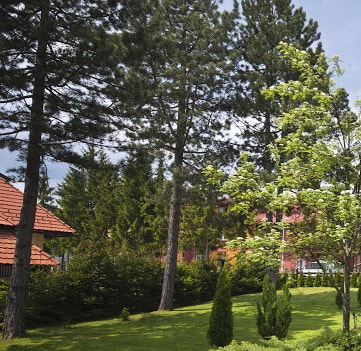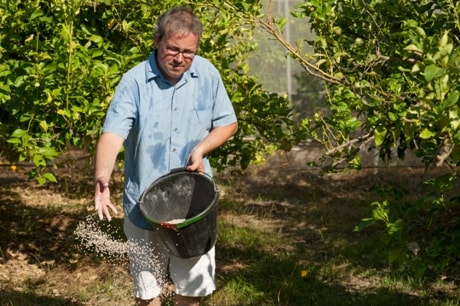
Beautiful, healthy trees enhance a landscape. They make the air more breathable by reducing carbon dioxide. Their root systems prevent soil erosion. They create a natural noise and wind barrier, and provide cooling shade in summer. According to Trees Canada, they even raise property values. So keeping trees healthy is important, but it can be challenging.
Trees must endure extreme weather conditions; attacks from insects and disease; environmental toxins; and neglectful homeowners. It’s easy to overlook signs that a tree is stressed since they grow and change at a much slower rate than most of the other plants in a garden. According to The Green Pages at Espace for La Vie Montreal, fertilizing trees regularly can help them thrive, and even help damaged and neglected trees to heal.
Do all trees benefit from fertilization?
Regular fertilization will help trees grow strong, making them more resistant to drought, insects and disease. The Tree Care Guide from Manitoba Hydro indicates most trees should be fertilized regularly, depending on soil conditions and the type of tree. They recommend fertilizing every other year starting, with the second year of growth. But some trees will benefit from fertilization more than others. Trees damaged by extreme weather, insect pests, or disease need fertilization to help them heal. Young trees, three to 15 years old, also do better with a fertilization plan, according to Canadian Gardening Magazine.
When is the best time to fertilize?
There is some disagreement among the experts about when and how often healthy, established trees should be fertilized. There are some general rules to follow when making a feeding plan. Damaged trees should be fertilized in the early spring after the damage occurred. In fact, most trees shouldn’t be fertilized after July so that new growth will have time to harden before winter sets in. Because of their accelerated growth rate, young trees require annual fertilizations, beginning in the second or third year after planting. Fertilizing too early can cause young trees to grow shallow roots, making them vulnerable to drought and high winds. Most healthy established trees will benefit from feedings every other year.
How is fertilizer applied to trees?
There are a variety of methods for applying fertilizers. The most common are soil injection, foliage sprays and implanted fertilizers. Each method provides unique benefits. Implanting fertilizer directly into the tree trunk is generally used for seriously damaged or distressed trees. Spraying fertilizers directly onto tree foliage is generally used to address deficiencies in minor elements like iron or manganese according to a University of New Hampshire report on tree fertilization. Soil injection, which is often done by professionals, is widely considered the most effective practice for nitrogen or phosphorus fertilization. This method puts the fertilizer at the proper depth for maximum benefit in long-term plans.
What type of fertilizer is best?

There are a lot of subtleties to tree nutrition. Knowing your soil type is the first step to knowing what your trees need to be fed in order to thrive. High-nitrogen fertilizers are used to help established trees develop new growth and green out. They’re also helpful in re-growing a canopy that’s been damaged by weather, disease or insects. They are not recommended for very young trees which need to concentrate on developing strong root systems. Young trees and trees with root damage will benefit most from high-potassium fertilizers, which encourage root growth.
Most tree care experts, including those at Tree Canada, agree that it’s important to feed your trees, but knowing what they need and when is critical to success. If you’re unsure which of your trees would benefit from fertilization or which nutrients your trees need, it might be best to consult a professional. At Great Northern ReGreenery we are the tree care experts and can you help determine when and how to apply the right fertilizers for your trees’ specific needs. Give us a call at 905-775-7444.





